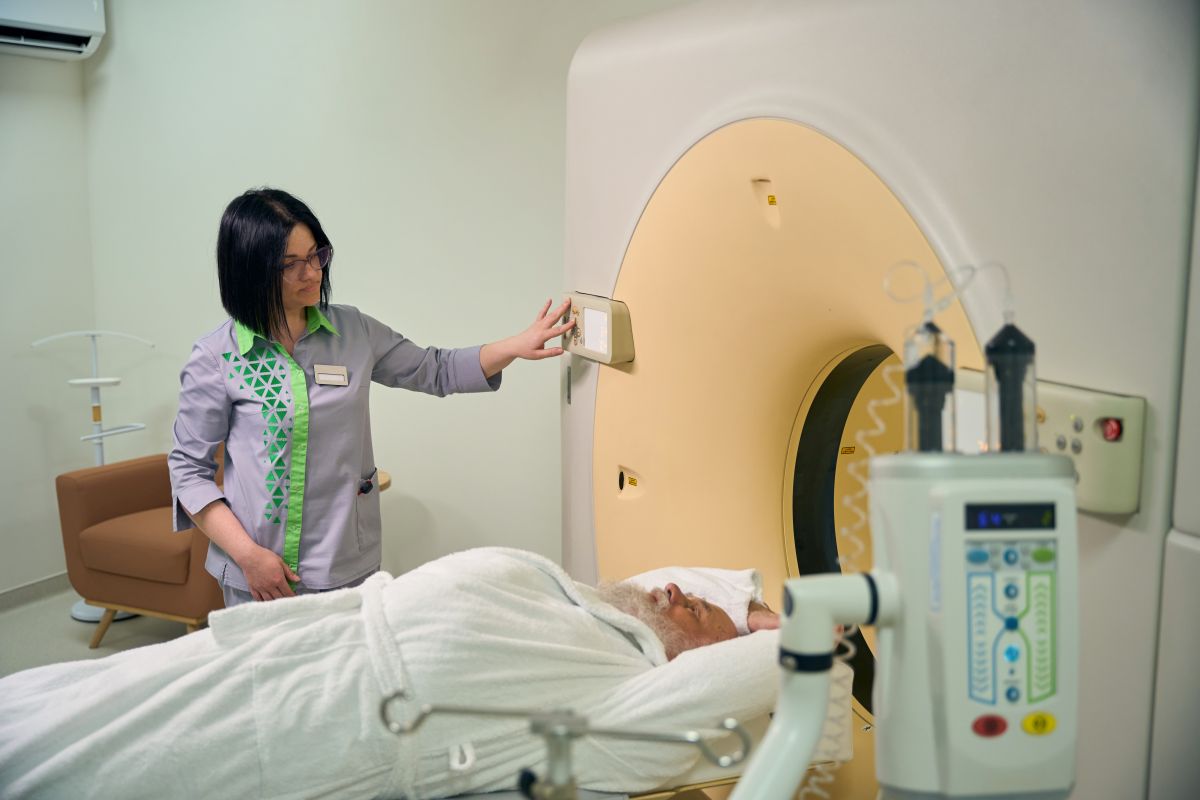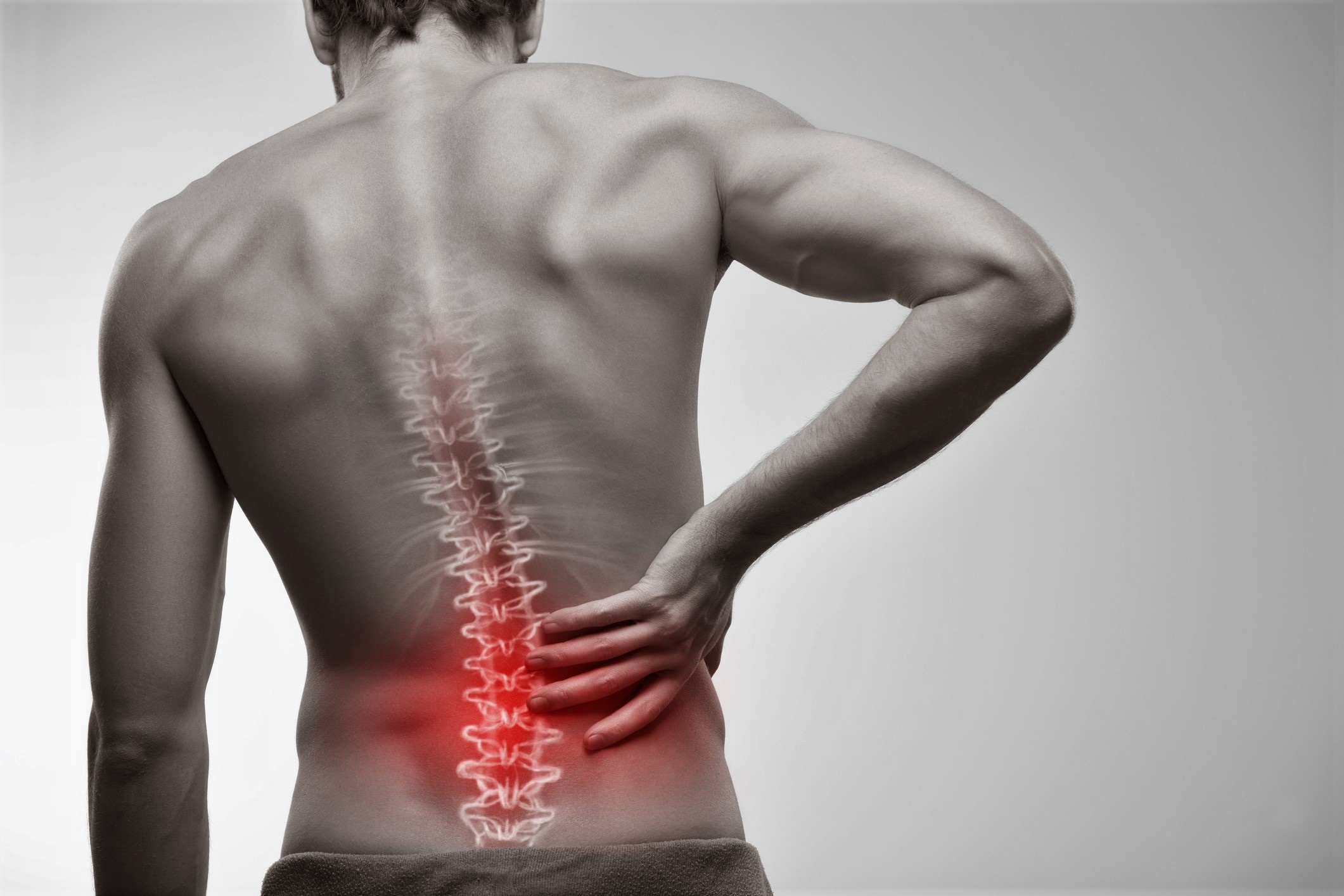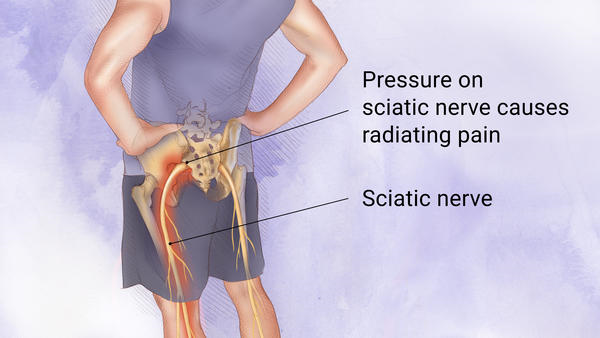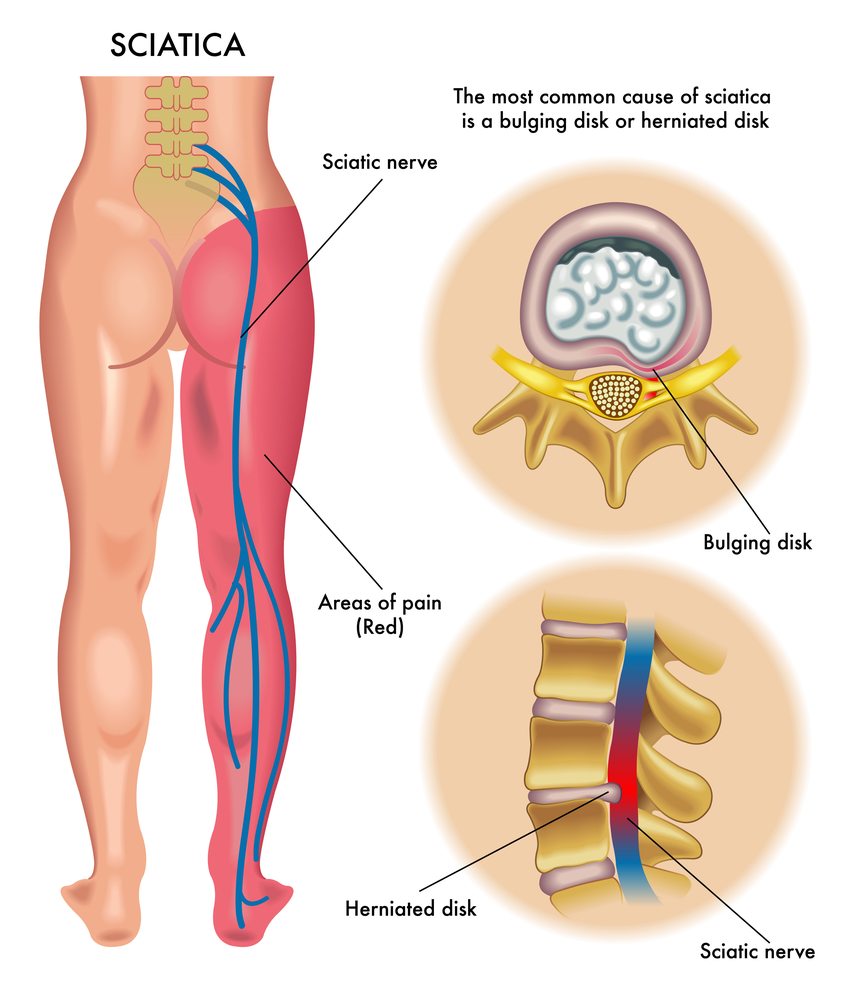Sciatica
Will Sciatica Show Up On MRI

Sciatica is a common form of back pain, with symptoms radiating from the lower spine down one or both legs. It affects millions of people worldwide each year and can have a significant impact on an individual’s physical health and quality of life. Many are curious as to whether sciatica will show up in MRI scans; this article seeks to answer this question by exploring existing research into the effectiveness of MRI for diagnosing sciatica.
MRI is often used in medical diagnosis due to its ability to provide detailed images of soft tissue structures within the body such as bones, muscles and discs. This makes it particularly useful when diagnosing back pain conditions, including sciatica. While not all cases may benefit from MRI imaging, there is some evidence that suggests it can be helpful in identifying nerve compression caused by herniated discs which can lead to sciatica-like symptoms.
The purpose of this paper is to explore current research regarding the use of MRI for detecting sciatica and evaluate its potential benefits for patients suffering from chronic lower back pain. By examining existing studies, we seek to determine if MRI is indeed an effective tool in diagnosing sciatica or other related conditions causing similar symptoms.
What Is Sciatica?
Sciatica is a term used to describe pain that radiates along the sciatic nerve, which runs from the lower back and through the buttocks down into each leg. It is usually caused by compression of one or more lumbar spine nerve roots in the lower back. Symptoms of sciatica can include pain that ranges from mild to severe, tingling, numbness, burning sensations, and/or weakness in legs and feet.
The most common causes of sciatica are herniated discs, bone spurs on vertebrae, spinal stenosis (narrowing of the spine), degenerative disc disease, pelvic injuries, piriformis syndrome (involving an irritated muscle in the buttocks) and pregnancy-related discomfort due to increased pressure on nerves in the pelvis. A diagnosis for sciatica will involve a physical examination as well as imaging tests such as X-rays or MRI scans if deemed necessary. Treatment options depend upon severity and duration of symptoms but may include nonsteroidal anti-inflammatory drugs (NSAIDs), physical therapy exercises, corticosteroid injections or surgery depending on individual circumstances.
Early detection and treatment are key for managing sciatica pain; therefore it is important to seek medical advice should any concerning signs arise.
Using MRI To Diagnose Sciatica
Often, the cause of sciatica is difficult to determine from physical examination alone. In these cases, imaging tests such as X-rays and MRI scans are used to help diagnose the condition. An MRI scan is particularly useful for identifying herniated discs or other problems in the spine that may be causing your pain. It can also detect tumors or spinal infections, which should be ruled out when diagnosing sciatica.
Using an MRI to diagnose sciatica can provide insight into the source of a patient’s pain and inform treatment decisions. The images produced by an MRI show detailed information about soft tissues, including muscles, ligaments, tendons, and nerves within the body. This makes it a valuable tool for detecting abnormalities within these structures that could be causing symptoms associated with sciatica.
The use of MRIs has become increasingly popular in recent years due to their improved accuracy over traditional radiographs (X-rays) in detecting certain sources of back pain caused by disc issues or nerve compression. Although they are more expensive than traditional X-ray exams, MRIs provide important diagnostic information that can help guide treatment decisions and ultimately improve outcomes for those suffering from sciatica.
Other Tests For Sciatica
In addition to MRI scans, other tests may be used in diagnosing sciatica. These include nerve conduction and electromyography (EMG) tests, which measure the electrical activity of muscles and nerves respectively. Imaging scans such as X-rays are also sometimes performed in order to detect any structural abnormalities or degenerative changes that could be causing sciatica symptoms.
Nerve conduction studies analyze how quickly an electrical impulse travels along a particular nerve pathway and can help identify nerve damage due to compression by herniated discs or other causes. EMG testing measures the response of muscles when they are stimulated with electrodes placed on the skin near them, helping determine if there is evidence of muscle weakness or atrophy due to injury or disease. Both of these tests provide useful information for diagnosing sciatica but should not be relied upon alone; imaging scans such as MRIs often yield more accurate results.
X-ray images can show where bone spurs might be pressing on spinal nerves, providing important insight into what might be causing your pain. While X-rays do lack the resolution of higher quality imaging techniques like MRI, they still offer valuable diagnostic information about the spine and can assist in determining the source of a patient’s back pain when combined with other test results.
Treatments For Sciatica
Sciatica is a painful and often debilitating condition, but luckily there are several treatments available to help reduce pain levels. Acupuncture has been used for centuries to treat back pain, with recent studies showing that it may be an effective treatment for sciatica as well. Sciatica stretches can also help alleviate discomfort by stretching the affected muscles and relieving pressure on the nerves. Specific yoga poses have also proven helpful in managing sciatic nerve symptoms, such as cobra pose or pigeon stretch.
For more severe cases of sciatica, physical therapy or chiropractic care might be recommended. If these options do not provide sufficient relief, electrical nerve stimulation therapies like TENS (transcutaneous electrical nerve stimulation) could be prescribed; this involves sending tiny electric pulses through electrodes placed near the area of pain. Finally, massage therapy can help relax tense muscles and encourage blood flow around the affected area providing further relief from sciatic discomfort.
Ultimately, finding the right combination of treatments will depend on each individual’s specific needs and preferences; thus it is important that you discuss your options carefully with a qualified medical professional before beginning any form of self-treatment.
Frequently Asked Questions
What Are The Most Common Symptoms Of Sciatica?
Sciatica is a condition characterized by pain that radiates along the path of the sciatic nerve. The most common symptoms of sciatica include lower back pain, leg pain, and shooting pains in one or both legs down to the feet. In some cases, numbness, tingling sensations or burning discomfort may also be felt. These sensations occur when the sciatic nerve becomes pinched or compressed due to inflammation or injury.
The intensity and type of sciatica symptoms vary from person to person depending on how severe the compression on the sciatic nerve is. While many people experience milder forms such as occasional shooting pains down their legs, others suffer from more severe symptoms including constant chronic ache in the lower back area that worsens with sitting for long periods of time. Movement can help alleviate this kind of discomfort temporarily but it often returns upon resuming an activity after a period of rest. Additionally, individuals suffering from extreme forms of sciatica may find themselves unable to move freely without experiencing intense levels of pain throughout their legs and buttocks areas.
Treatment options are focused on relieving pressure placed on the affected nerves while providing relief from uncomfortable symptoms associated with this condition. This includes physical therapy exercises designed to stretch out tight muscles around the spine as well as anti-inflammatory medications prescribed to reduce swelling and irritation caused by inflamed tissue surrounding the sciatic nerve root. Surgery may be recommended for persistent cases where conservative treatments have failed to provide adequate symptom relief over an extended period of time.
Are There Any Lifestyle Changes That Can Help Reduce Sciatica Pain?
“Necessity is the mother of invention.” This adage holds true for those suffering from sciatica, as lifestyle changes may be necessary to reduce and prevent pain flare-ups caused by this condition. Sciatica, a nerve disorder causing pain in one or both legs due to irritation of the sciatic nerve, can have a range of causes with varying levels of severity. Fortunately, there are strategies that individuals can employ to help manage their sciatica symptoms and achieve relief.
The most effective way to reduce sciatica pain is through preventive measures such as exercise, maintaining good posture and proper ergonomics at work and home, limiting activities which aggravate symptoms, practicing stress management techniques such as yoga or meditation, losing weight if overweight or obese and quitting smoking. Additionally, certain medications like acetaminophen (Tylenol) and ibuprofen may also provide temporary relief from milder forms of low back pain associated with sciatica. Here are a few examples of how you can incorporate these practices into your daily routine:
• Exercise regularly – Regular physical activity helps strengthen muscles supporting the spine while improving flexibility and circulation throughout the body. Low impact exercises such as swimming or cycling are particularly helpful when dealing with sciatica related discomfort.
• Develop better postural habits – Proper posture helps maintain optimal spinal alignment which reduces strain on joints and discs in your lower back area leading to reduced inflammation in the nerves around it.
• Apply heat/cold therapy – Applying ice packs or heating pads directly onto areas affected by sciatica can help ease acute pain while providing gentle massage at pressure points triggers relaxation response in your brain resulting in decreased muscle tension reducing compression on irritated nerves.
• Take breaks during long periods of sitting – Sitting for extended amounts of time puts additional strain on already inflamed tissues so it’s important to take frequent breaks every 30 minutes or so during tasks requiring prolonged sitting positions such as working at a desk job etc..
These practices should not replace medical advice but rather serve as complementary actions taken alongside medication prescribed by doctors especially in more serious cases where surgery might be needed for successful treatment. In short, an individualized plan tailored towards specific needs is essential for managing chronic conditions like sciatica effectively over long term periods without exacerbating existing complications due to incorrect lifestyle choices made out of ignorance about its effects on health outcomes later down line.
What Is The Success Rate For Sciatica Treatments?
Sciatica is a common pain condition that affects the lower back and can be difficult to treat. Success rates for sciatica treatments vary depending on the severity of the condition and may include lifestyle changes, physical therapy, medications or even surgery in severe cases. Understanding the success rate for these types of treatments is key to managing this type of chronic pain.
Research has shown that conservative treatment options such as exercise, stretching, massage, yoga and other forms of physical therapy are successful in reducing symptoms associated with sciatica. Additionally, lifestyle modifications such as weight management and quitting smoking are also effective in helping reduce sciatica-related discomfort when combined with traditional medical care. Medications including nonsteroidal anti-inflammatory drugs (NSAIDs) have been proven to be beneficial for short-term relief from sciatica pain conditions; however, long-term use should only be done under a doctor’s supervision. In severe cases where none of these approaches provide adequate relief, surgical intervention may be necessary. Studies suggest that overall satisfaction with surgical interventions range between 60%-90%, although specific outcomes depend on individual circumstances.
It is essential to understand the available treatments for managing sciatica and their potential success rates before making decisions about how best to address an individual’s particular needs. Consulting with a specialist in back pain can help determine which approach will bring optimal results while minimizing risks and side effects associated with certain treatment plans.
How Long Does It Take For Sciatica To Show Up On An MRI?
The sciatic nerve is the longest and widest single nerve in the human body, running from the lower back down through both legs. As a result of its length, it can easily become compressed or irritated, leading to pain that radiates along its path – this is known as sciatica. In order to diagnose and treat sciatica effectively, an MRI scan may be necessary for accurate results. The question then arises: how long does it take for sciatica to show up on an MRI?
An MRI scan works by using magnetic fields and radio waves to produce detailed images of inside the body. It typically takes around 30-45 minutes per session, depending on what needs to be scanned and the extent of imaging required. If there is concern about potential damage to the sciatic nerve due to compression or irritation, an MRI will likely be prescribed which could help determine if any treatment options need exploring further.
When looking at how long it takes for sciatica to show up on an mMRI specifically, factors such as severity of symptoms and type of inflammation are taken into consideration when deciding appropriate timing for scans. Here are some key points worth considering when determining your own timeline:
•Sciatica usually becomes visible within 2 weeks after commencing treatment;
•If severe pain occurs early on in one’s course of treatment, an earlier scan date might be recommended;
•MRI scans provide detailed images deep within tissue structures giving clinicians greater insight into underlying issues compared with other diagnostic tests;
•It is important to ensure you have adequate preparation time before undergoing an MRI so that relevant information can be gathered during your appointment.
Understanding how long it takes for signs of sciatica to appear on an mri is important when seeking medical advice and planning future treatments accordingly. An experienced specialist in back pain should always be consulted prior to having any kind of imaging test done – they will review all available evidence regarding current condition/symptoms and make recommendations based upon individual circumstances.
Is There A Difference Between Sciatica And Other Lower Back Pain Conditions?
Sciatica is a condition that affects the sciatic nerve, causing pain down the back of one or both legs. It is often associated with lower back pain and can be confused with other conditions affecting the same area. To understand any difference between sciatica and lower back pain conditions, it is important to consider their symptoms, causes, diagnosis, treatment options and prognosis.
The most common symptom of sciatica is shooting leg pain which may be accompanied by tingling, numbness or weakness in the affected leg. Other symptoms include burning sensations and muscle spasms in the lower back caused by compression of the spinal nerve roots due to herniated discs or bone spurs in the spine. Lower back pain on its own can have similar characteristics as those seen with sciatica but usually does not cause radiating pains along the path of a single nerve root like Sciatica does.
In terms of diagnosing the differences between these two conditions there are several tests available such as MRI scans, x-rays or CT scans all of which can help differentiate between them. Treatment for each condition also varies; depending on diagnosis and severity some treatments for lower back pain include physical therapy exercises and massage whereas sciatica may require more invasive treatments such as steroid injections or surgery. The following list outlines key differences between these two conditions:
•Sciatica involves shooting pains along a single nerve root while lower back pain is an ache located within one’s lumbar region
•MRI scans are useful in differentiating between them
•Lower Back Pain tends to respond well to physical therapy exercises while Sciatica requires more intensive forms of treatment such as steroid injections or surgery
•Symptoms vary slightly – e.g., Lower Back Pain typically presents itself through stiffness/aches whilst Sciatica has electric shock type sensations running down one’s leg
•Prognosis differs significantly – recovery time from Lower Back Pain depends heavily upon lifestyle changes while recovery time from Sciatica will depend on how effectively underlying causes are addressed
For many individuals who experience either form of discomfort seeking medical advice should always be first priority before attempting self-treatment methods so that a correct diagnosis can be made and appropriate treatments prescribed accordingly.
Conclusion
Sciatica is a painful condition that can cause significant discomfort and disability. The most common symptoms include pain, numbness, and weakness in the lower back and legs. Although there are no definitive lifestyle changes to alleviate sciatica pain, certain activities such as stretching, avoiding sitting for long periods of time and regular exercise may help reduce symptoms. Treatment success rates vary depending on the underlying cause but typically range from 50-80%. An MRI scan is often used to diagnose sciatica since it takes up to 4 weeks for the condition to show up on an imaging test. It is important to distinguish between sciatica and other types of lower back pain conditions as they require different treatment approaches.
In conclusion, although sciatica can be quite painful, there are treatments available that have been proven successful at alleviating symptoms. While lifestyle modifications may provide temporary relief, an MRI scan is needed to confirm diagnosis so appropriate interventions can be implemented. Differentiating between sciatica and other forms of lower back pain should also be taken into consideration when making decisions about treatment options. As a result, patients with suspected sciatica should consult a physician or specialist in order to receive prompt care and maximize the chances of achieving positive outcomes.
























